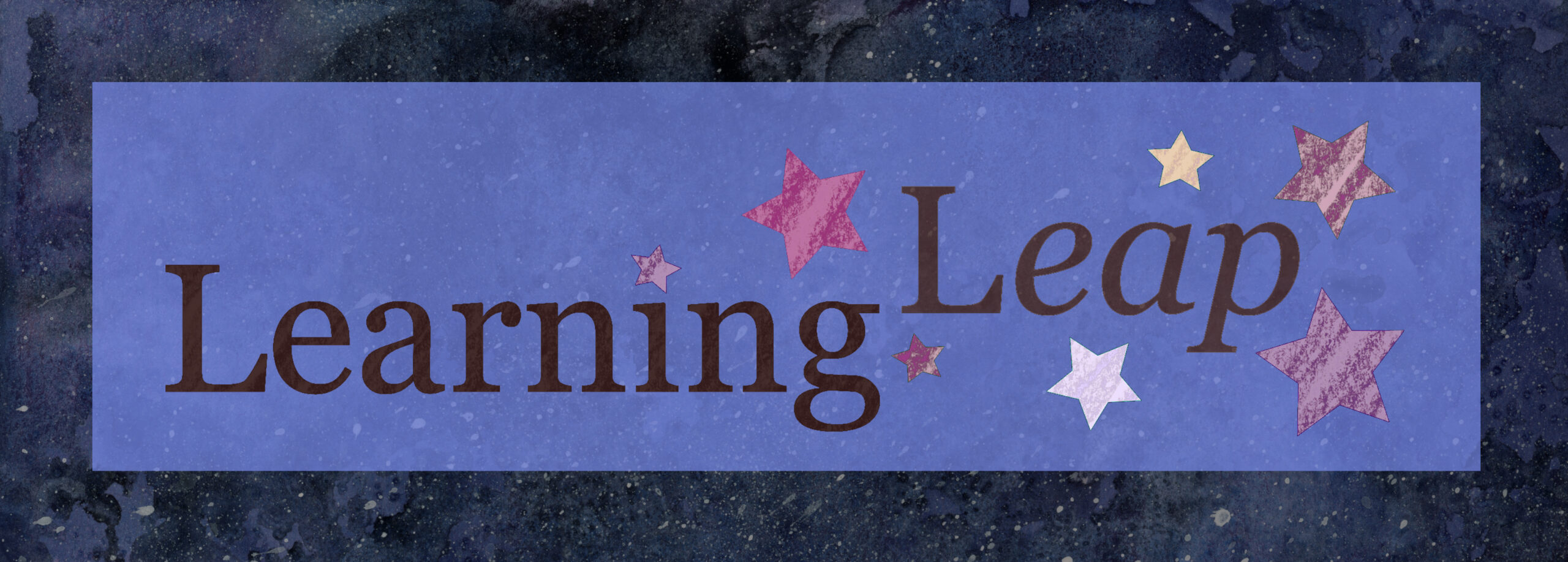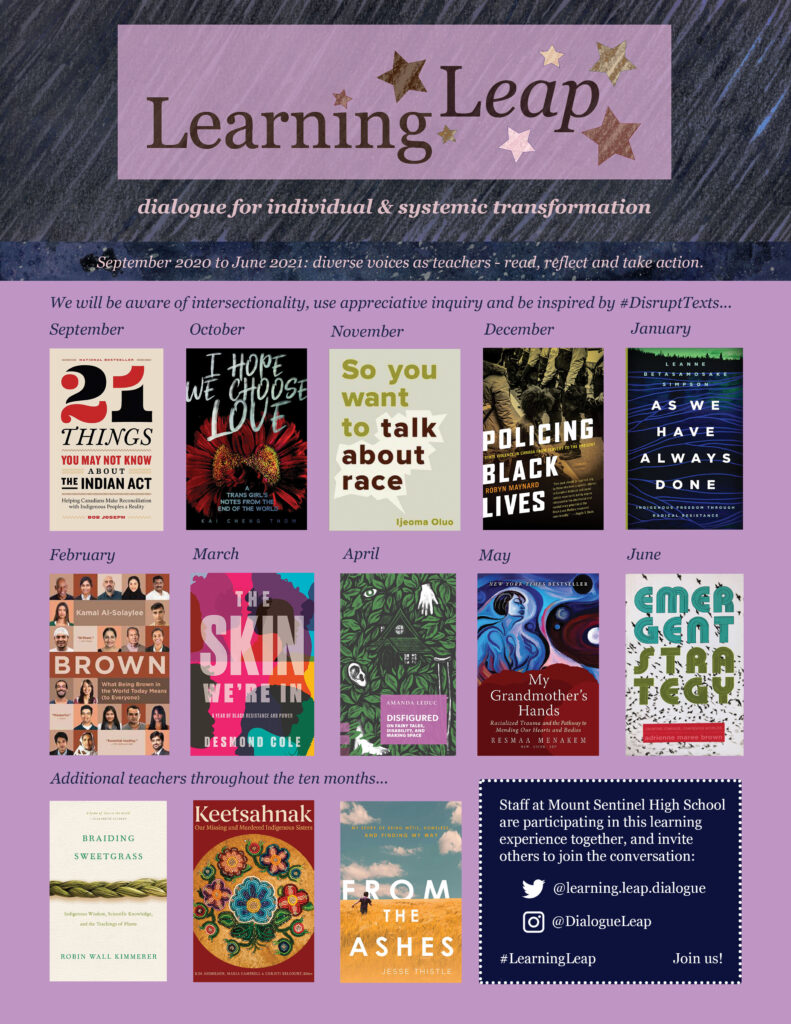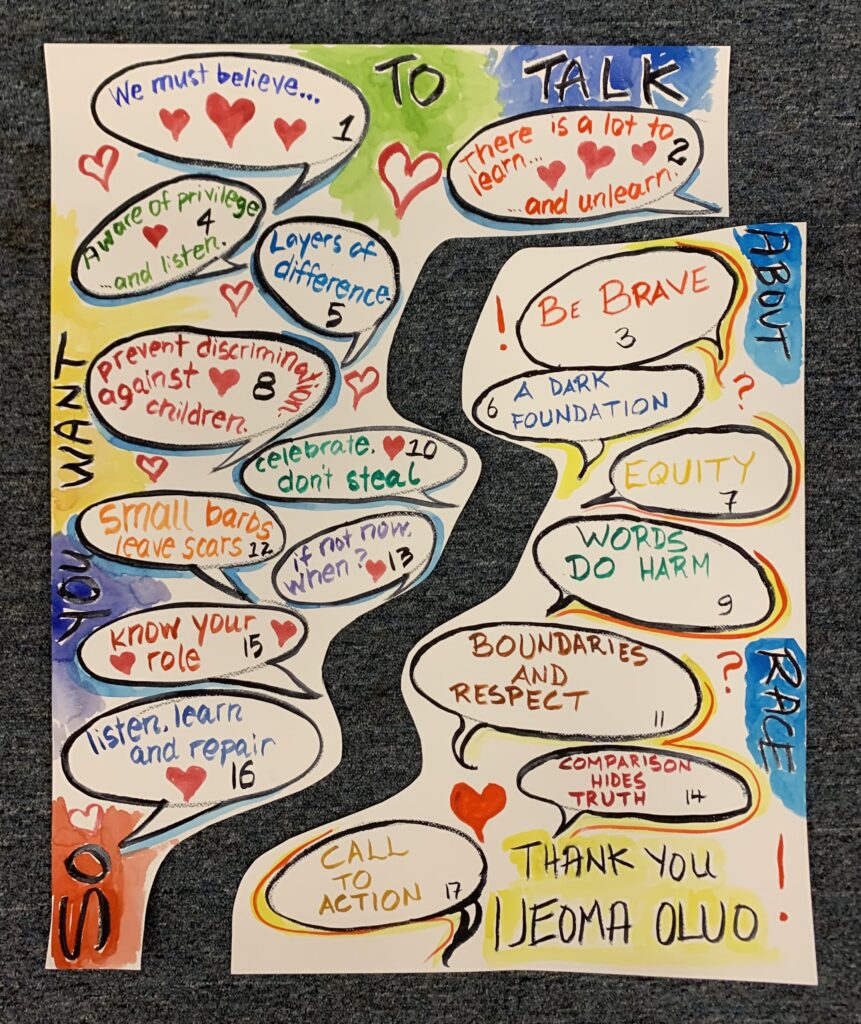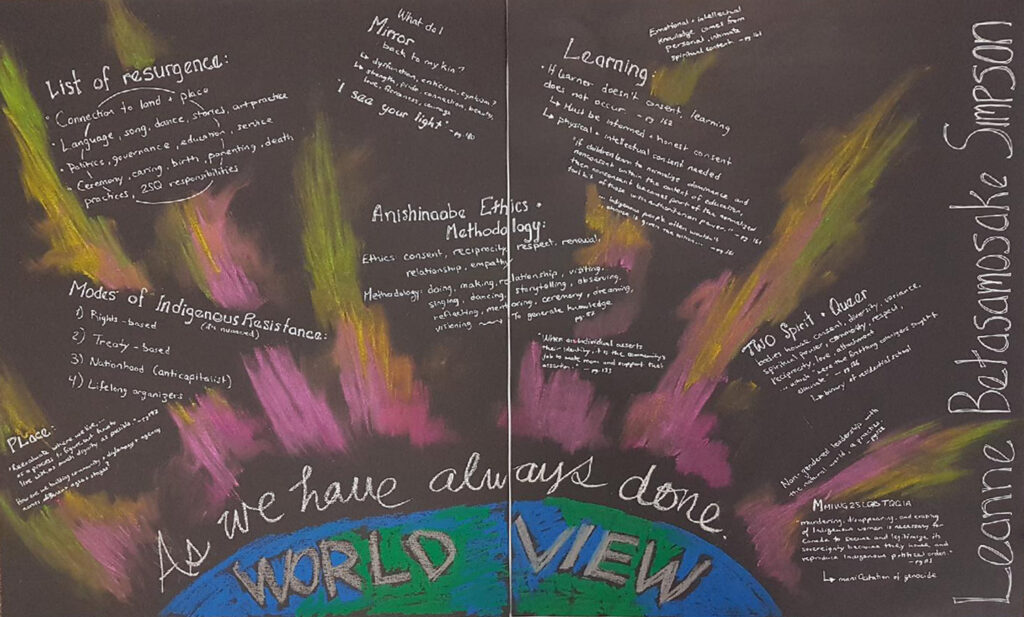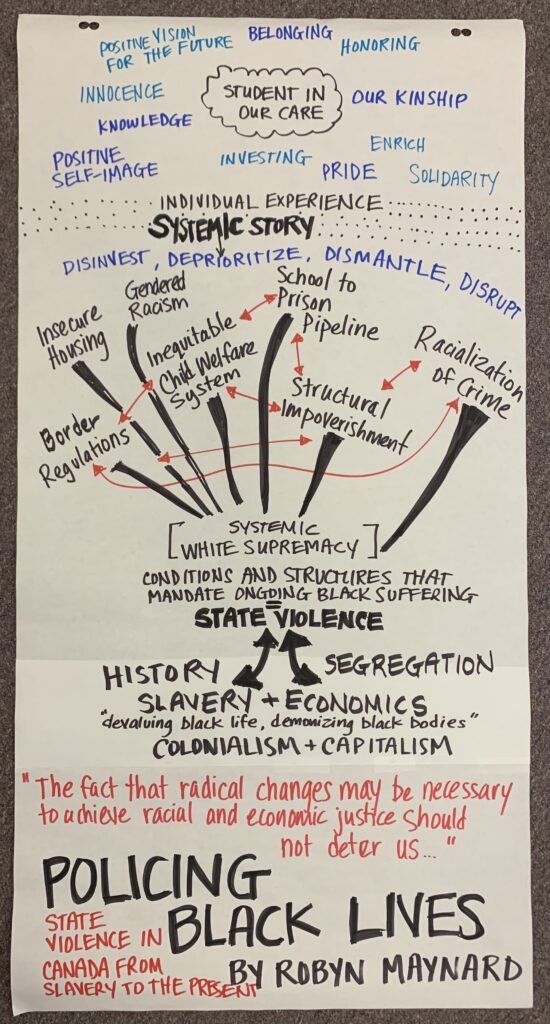…because the creativity and insights of those who have walked before us can light our path.
Engaging in the sometimes difficult work of learning and leading for reconciliation also includes many joys. One such joy is the constant inspiration brought by Indigenous writers, scholars, storytellers, musicians and artists sharing their truths, perspectives and visions. It is a testament to longstanding Indigenous activism and resilience that we now live in times when these voices are more supported by institutions, publishers and platforms.
Responding to texts
One of our early learning tasks in coursework this summer was the very enjoyable assignment of composing a short podcast as a response to a literary or multimedia text. I chose to spend time with the book Birdie, by Tracey Lindberg of Kelly Lake Cree Nation, which I had read years ago, but without enough cultural understanding to fully appreciate its artistry.
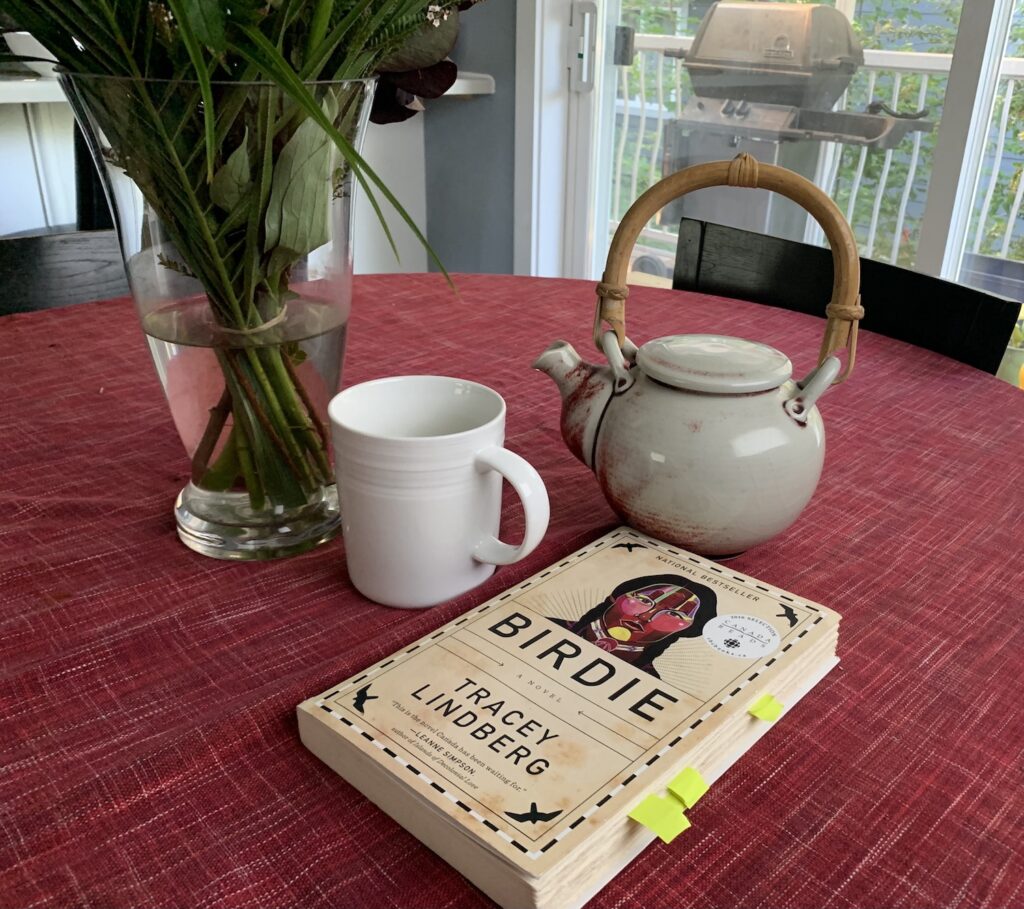
My podcast can be heard at this link, and reflects my renewed initial acquaintance with this engrossing book. When I had first read it five years ago, it barely registered that I have have connections in my own family history to the region where many scenes in the book take place. My paternal ancestors resided in northern Alberta for several generations, but I have only been looking at these histories more closely in recent years. For instance, I just learned recently that there were Cree speakers among them connected to fur trade commerce with the Hudsons Bay Company. This brings greater personal incentive to be curious about the Cree language segments she includes in the book. Meanwhile I must also reflect upon the ancestral responsibilities I carry for the effects of colonization the characters must overcome.
This was an inspiring way to deepen my connection with a beautiful book, which makes me consider repeating the activity with other books on my shelf and new titles. I have since finished the book a second time, with plans to start a third and slower read to really take in all the poetic and cultural content she shares. In some discussion questions at the back of the book, Tracey Lindberg shares her reflections about the main character Bernice, also known as Birdie. “I love Bernice. I still cry over her quiet strength, hard choices and pain. My celebrations over her good choices, healing, and gentleness in the face of exceptional violence are never-ending… She is an amalgam of every woman I love, have been challenged by and am.” Birdie, through Tracey Lindberg’s voice and vision is such good company.
Scholarly Inspiration
Entering graduate level studies is exciting and intimidating in equal measure. Having been immersed in practical teacher problem-solving since entering the classroom in 2015, it is a delight to be engaged in the realm of ideas again, interweaving theory with personal connections to make new meaning. I feel very fortunate to begin my studies in a program that is not only academically challenging, but also creative and caring. It is bringing together all the strands of my prior experiences and current and future interests in ways that are still mysterious, but absolutely compelling.
I have been very inspired learning from our professor, Métis scholar and advocate Dr. Yvonne Poitras Pratt, who has recently published a fascinating book Digital Storytelling in Education about her life’s work in cultural resurgence through digital storytelling with her home community of Fishing Lake, Alberta. Many of the digital stories are now available for viewing at the website Métis Voices, along with suggested classroom applications. Witnessing the stories, and hearing Dr. Poitras Pratt speak about their context in the still largely silenced history of the Métis people reaffirms my commitment to continue challenging the simplified, inaccurate and nationalistic narratives of Canada that are still so predominant. Having been connected to Dr. Poitras Pratt since my BEd studies, it has been such a joy to be in her company more regularly again. I admire her commitment to building awareness and speaking truth to power, and also learn from the care she brings to relationship and sustaining hope.
We were also instructed by Métis scholar Dr. Jaime Fiddler, who brought a warm and supportive presence to our learning, keeping us organized, and offering connections to her passion for writing, learning with and through the arts, deep respectful listening, and using our voices to connect. I am grateful to become acquainted with her and hope to continue learning from her scholarship and creative pursuits in the years ahead.
In addition to the inspiring teaching of our instructors, we were also fortunate to have guest presentations from three additional scholars, including two I had been introduced to during my last degree. Solange Lalonde, Métis, shared her Relational Model for Teaching and Learning, and Dr. Patricia Danyluk, a non-Indigenous ally, drew connections for us between decolonization and transformative learning. A third presenter, Dr. Elisa Lacerda-Vandenborn who came to Canada from Brazil in 2004, has been immersed for the last ten years in decolonizing mental health and child services through the lens of communal care. She shared practical guidance for challenging harmful institutional practices, as well as a traditional hummingbird story to bring hope – we are all like hummingbirds, whose individual efforts to do all that we can will make a difference to others and the world. A fourth presenter, Angie Houle, Métis teacher in Indigenous Education with Calgary Catholic school board, is most visible online through her presence on twitter. Her energetic and considered presentation brought many new ideas about empowering young people in a way that values and supports traditional and contemporary approaches to learning and teaching. As our Kainai Elder Wanda First Rider affirms “Indigenous people must understand two worlds” in order to thrive. I will bring this insight more deeply into my work going forward.
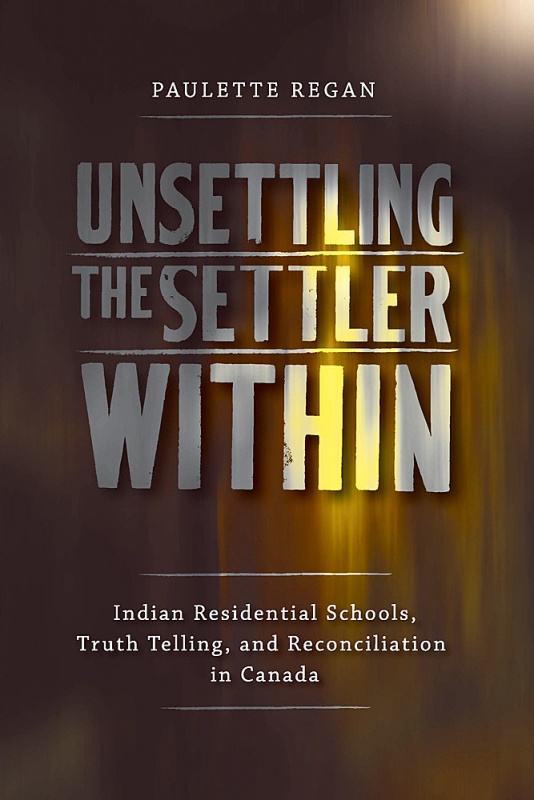
The reading and viewing lists for our summer courses were also rich and varied, illuminating multiple perspectives of Indigenous and non-Indigenous scholars as well as contexts for interrelated thought. I look at the folders of readings with gratitude, knowing that they have been carefully selected to support my learning and growth. One month of learning is just the beginning, and I look forward to revisiting these documents, and learning more from each of the writers as I bring greater depth to my learning through reflection, writing and dialogue. One important text I have been reminded to revisit is Paulette Regan’s Unsettling the Settler Within, which has been on my shelf for a long time, but not receiving the attention it merits for the guidance it can offer my path.
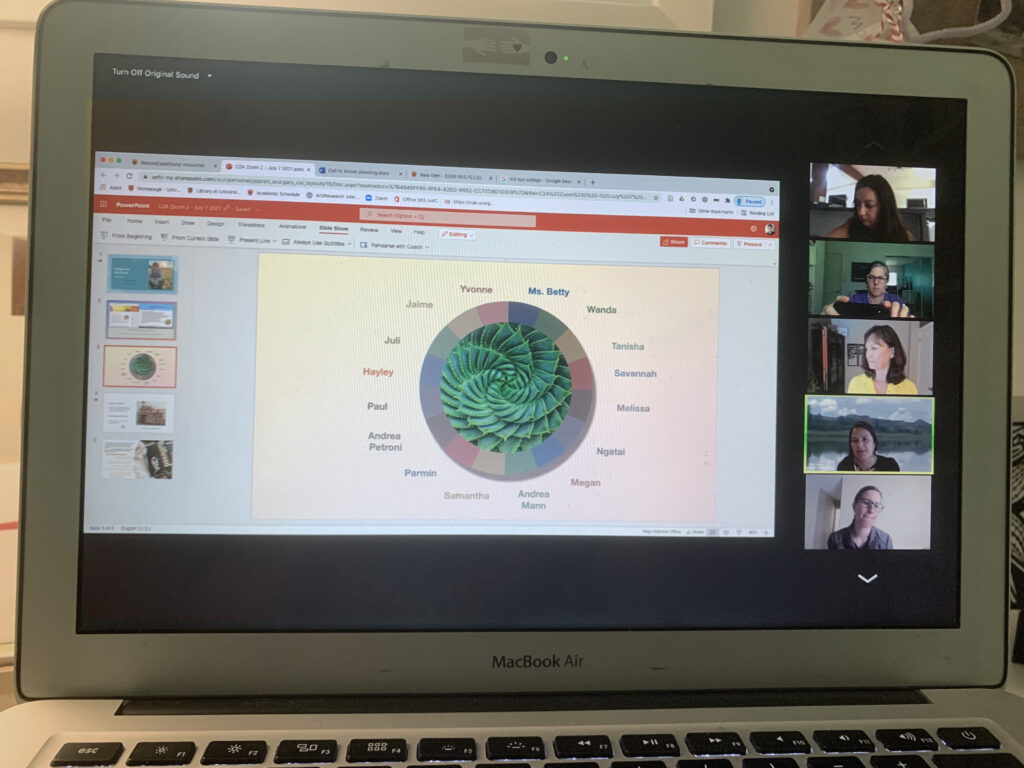
Finally, but significantly, the academic and personal inspiration I experience connecting with my peers in the program is another important gift. The sensibilities and perspectives that each person brings are so unique, and the way they make sense of our learning constantly brings new insights. I am looking forward to remaining connected over time as we each discover our path of scholarship and community action.
I am thinking about what responsibilities it brings to be a graduate student as compared with previous studies. I know it is a great privilege to be be able to set aside the time and finances to engage in this work, so I will seek reciprocal ways to give back in my circles and communities. I am inspired to have begun the journey of contributing to collective knowledge and will continue looking to all the many speakers, writers and thinkers who build new worlds through words, concepts and connections.
Reading and Learning Together
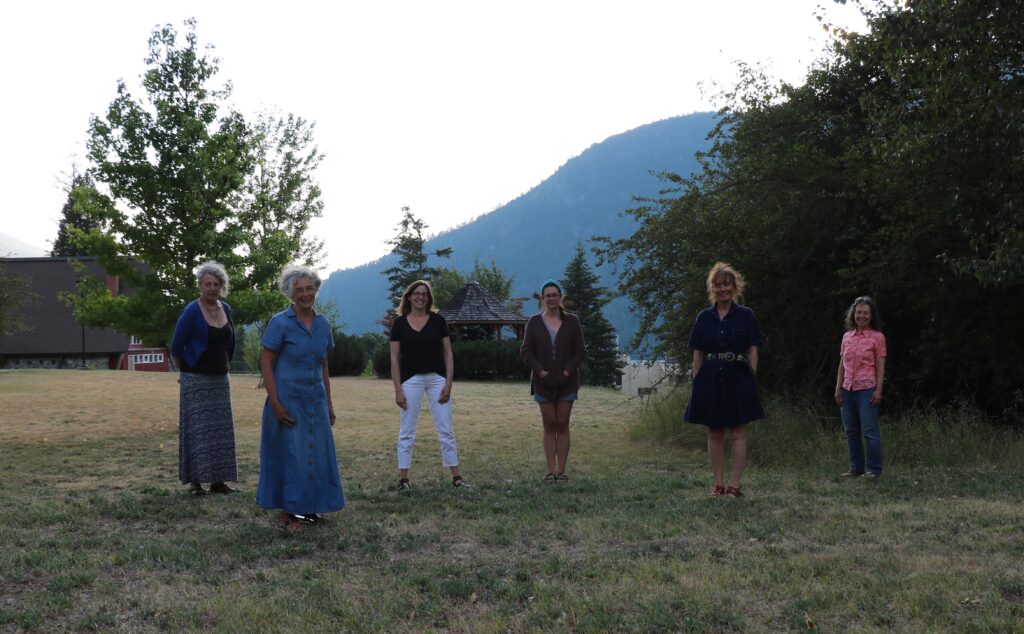
I feel so fortunate to read, learn and connect with a wonderful group of committed and thoughtful people through the Nelson Public Library for bi-weekly meetings. The group is called the “From the Heart Learning Circle,” and it has been gathering for the last 18-months, with no sign of slowing. The group first connected as a debrief session following the first annual From the Heart youth performance in our region, which you can learn more about in the Creative section on this site. The learning circle is a shifting group of 10 or more fellow book lovers, who are also motivated to bring their learning in reconciliation out into the community in various ways.

Our first book study was Indigenous Writes, by Chelsea Vowel, a text I recommend regularly as an accessible but deeply informative overview to support foundational awareness. It was a good starting point for us, as complex and engaging learning to accompany us through the reflective circumstances of the early pandemic months. As we were all becoming accustomed to connecting over zoom, we were also establishing our ways of being as a group, making an effort to bring circle protocols and mutual support into the circle along with the challenging historical and contemporary topics. These early meetings were more formal in nature, and the reflection themes and questions I developed to accompany the book could present a worthwhile project to revise and share to support others pursuing the same learning.
We have also engaged in some ‘off-the-page’ learning together as well, including poetry writing and learning through music, as seen in this listening playlist of contemporary Indigenous artists. Nevertheless, our passion for books remains – the book shelf of our shared reading is becoming quite full. A few of my other favourites are below, and I look forward to our whatever next titles we pursue.



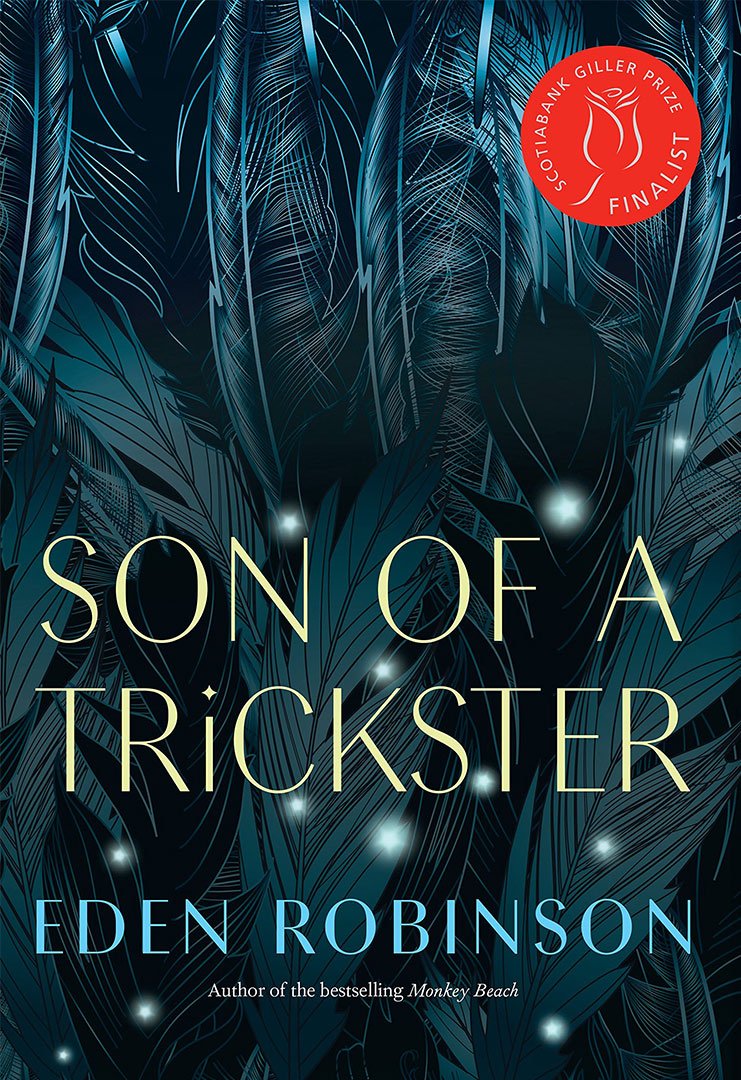
Another reading initiative I started in 2020 has the same name as this website because I brought Learning Leap to the staff at one of my schools as a collective professional learning project. This overview page shows our initial intentions and reading list, and some of the highlights from those experiences are also shared below. The earliest posts in the Dialogue section of this site also connect to this early iteration of Learning Leap.
We worked through the stack of books with one other team member reading along with me toward a shared presentation to the rest of the staff at each of our monthly meetings. The conversations that accompanied this work were rich and fulfilling. The presentations were well-received by our colleagues and brought many important topics to greater awareness in the school. The impact of this initiative will continue to unfold as we share the books and challenge each other to expand upon the presence of intersectional learning in the school community and our own teaching practice.
There were many highlights of this learning, including the collective creation of the teaching artifacts below. I am so grateful to the colleagues who jumped into this learning adventurously and with good hearts. Our students appreciated us taking up this work, with one senior student commenting “every school should do this!”
As it turned out, we came up a bit short with the ambitious list I had planned, so I will be working through a couple remaining books on my own. I will also look again at the full list to see what adjustments I might make to designing a suite of books for intersectional learning, should there be another group who may wish to undertake a similar learning leap.

From all the book learning over the last couple years, it is this text that has had the most bookmarks and re-reading for me. Thank you Sarah Miles for reading along with me the first time, and helping me see connections I would have otherwise missed. I am still keeping it close, and am very motivated to read and contemplate the many other books, talks and art forms that Leanne Betasamosake Simpson shares in the world. In her cross-discipline work, I see a model in the way she engages in learning, creating and communicating in such an integrated and intimate way.
In addition to this immersive book, I was very influenced by a chapter called “Towards Black and Indigenous Futures on Turtle Island” she wrote in company with Robin Maynard in the anthology Until We are Free. There has been an announcement of an upcoming collaborative book by these two writers that should be published in 2022. It will certainly be amazing.
In the meantime, her book Noopiming: A Cure for White Ladies is waiting for me to read next – it will certainly be an interesting read through the unavoidable lens of being a white lady. It is not lost on me when Leanne Betasamosake Simpson shares “there is virtually no room for white people in resurgence,” (As We Have Always Done, p. 228), but she also notices that “when we put our energy into building constellations of coresistance within grounded normativity that refuse to center whiteness, our real white allies show up in solidarity anyway” (p. 231). That is the kind of presence I have been growing into over time, and will continue to pursue all dimensions of learning that serve this way of being.
Storytellers
The pandemic has brought one positive, which is an absolute wealth of online content for learning from speakers sharing their stories of growth and survival. My school district brings such wonderful presenters to us to support our learning, including such prominent names as Desmond Cole, Maria Campbell and Chief Dr. Robert Joseph (see my sketchnote below).
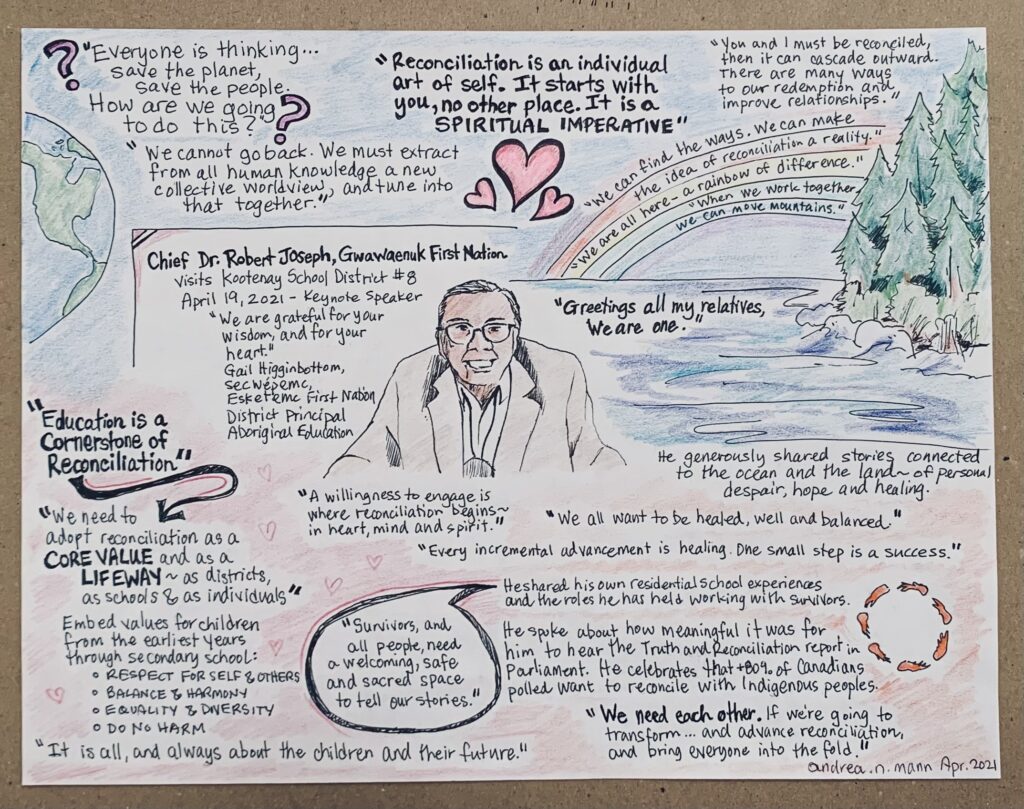
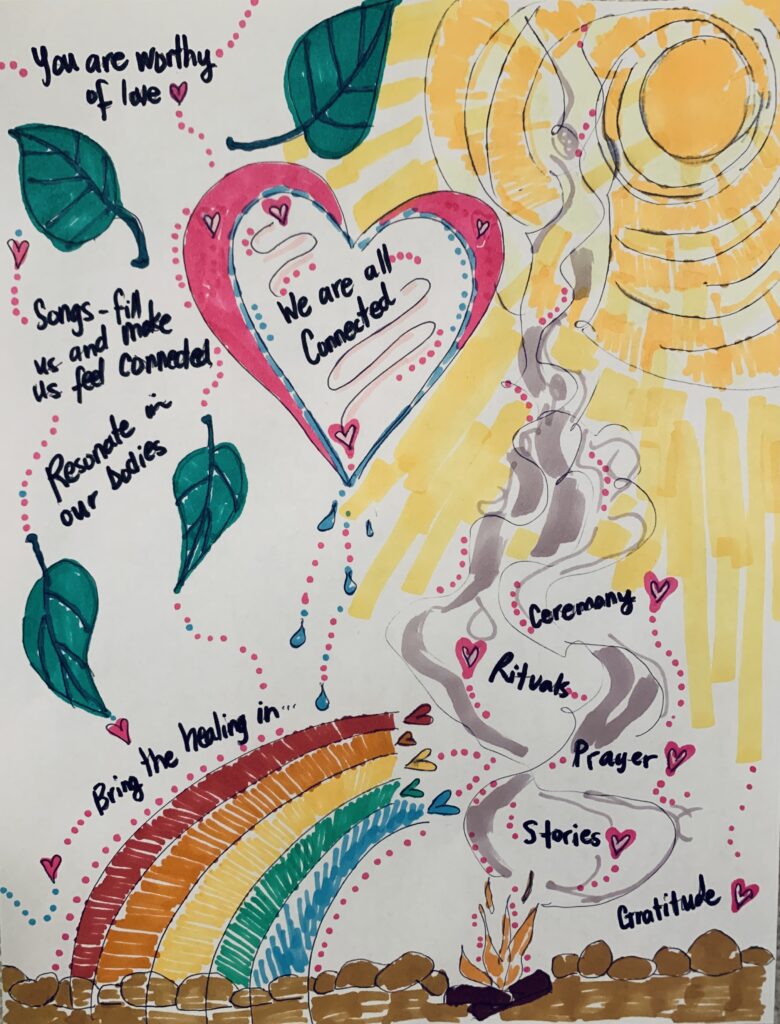
Other favourite online learning contexts include the Reconciling Ways of Knowing Forum, which has archived all past forums on their site and the Turtle Lodge YouTube channel, as well as learning opportunities with the Equity Literacy Institute and Due East which provide excellent guidance applicable in the classroom.
And for more personal online connections, I try to join in Monday night online storytelling whenever I can with VIDEA, an incredibly impactful Victoria-based organization I am fortunate to partner with. This illustration was made during one of their inspiring storytelling offerings, and reflects the truth I feel about having the opportunity to be a listener and member of the circle in their work.
Artists
Lastly, I have included in this section, an archived page listing inspiring Indigenous Artists and Resources from when I first worked on the site during my BEd undergrad. These are creative thinkers who continue to inspire me with the new awareness they make possible through their visual, spatial and conceptual understanding of the world. Although I haven’t been teaching visual art formally for several years, it is an approach I take in my teaching regularly. Often visual art offers a rich starting point for dialogue, as well as the ideal path for learners to integrate their learning and make it visible to themselves and others. These ideas will be explored further in the Creative section of the site.
